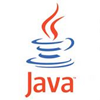 HashMap vs concurrentHashMap, well, this is one of the important interview question, in another way, what is basic differences between
HashMap vs concurrentHashMap, well, this is one of the important interview question, in another way, what is basic differences between HashMap and ConcurrentHashMap?
HashMap Vs ConcurrentHashMap
Follwoing is the differences between concurrentHashMap and Hashmap in java. You can visit to know more about manupulation of any entry (key/value pair) of HashMap in Java, like How to remove Entry from HashMap in Java
| Consideration | HashMap | ConcurrentHashMap | Description |
| Synchronization | No | Yes | HashMap can be synchronized by using Collections.synchronizedMap(new HashMap()) ~ this way method we get a HashMap object which is equivalent to the HashTable object \, so every modification operation is performed on Map is locked on Map object. |
| Threadsafe | No | Yes | HashMap is not thread-safe while ConcurrentHashMap is thread-safe. |
| Null Key | 1 null key | not allowed null key | HashMap allowed one null key and multiple null values while ConcurrentHashMap not allow null key. |
| Performance | fast | Slower | Any number of thread can access HashMap object without locking \, while in ConcurrentHashMap lock portion of bucket. |
Differences between some java classes
You can visit other differences between two java classes:
- Difference between HashMap and ConcurrentHashMap in java
- Difference Between HashMap and HashSet in Java
- HashMap Vs HashTable Vs SynchronizedMap Vs ConcurrentHashMap in Java
Happy learning of differences between HashMap and ConcurrentHashMap.
Hiya! I know this is kinda off topic but I’d figured
I’d ask. Would you be interested in trading links or maybe guest writing a blog post or vice-versa?
My website covers a lot of the same subjects as yours and
I think we could greatly benefit from each other. If you might be interested feel free to send
me an email. I look forward to hearing from you! Awesome blog by the
way!
Aw, this was an incredibly good post. Spending some time and actual effort to
make a very good article? but what can I say? I put things
off a lot and never manage to get nearly anything done.
Awesome article.